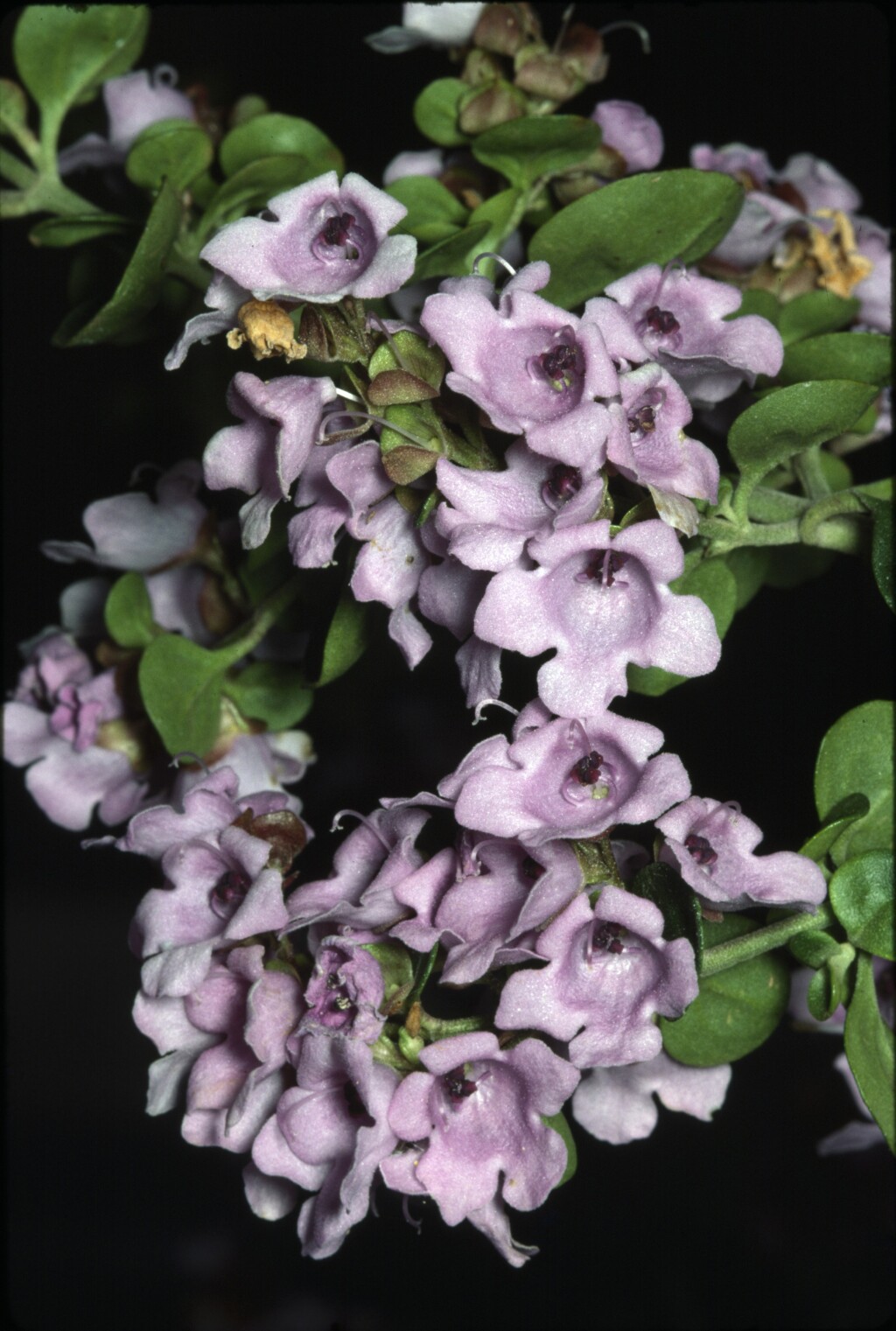Prostanthera rotundifolia
R.Br. Round-leaf Mint-bushErect, compact to spreading shrub 0.5–3(–4) m high, 1.5–2.5 m diam., aromatic; branches moderately covered with short curled hairs and subsessile glands. Leaves ovate to obovate or c. orbicular, 3–20 mm long, 3–15 mm wide, mid-green (rarely c. silvery), moderately to densely glandular, glabrous except midrib often sparsely to moderately hairy, base attenuate and decurrent to broadly cuneate, margin entire or irregularly lobed or crenate, apex rounded; petiole 2–8 mm long. Flowers appearing axillary; bracteoles not persistent, 1–2 mm long, 0.2–0.3 mm wide. Calyx 4–5 mm long, tube 2–3.5 mm long, adaxial lobe 1.5–2 mm long (slightly enlarged in fruit); corolla purple-mauve to purple, sometimes pinkish, 10–15 mm long; anthers lacking appendages, each lobe with a tuft of basal hairs. Flowers Sep.–Nov.
MuM, Wim, VVP, VRiv, GipP, Gold, CVU, GGr, DunT, NIS, EGL, EGU, HSF, HNF, MonT, HFE, VAlp. Also Qld, NSW, Tas. Widespread and locally common, in habitats ranging from sheltered sites in closed or open sclerophyll forests and rainforest margins, to exposed rocky areas, often in elevated sites.
The leaves of this species are extremely variable in size, texture and shape. In drier areas the leaves tend to be small, orbicular to ovate and sometimes obscurely crenate. A rather distinctive form with rather slender, erect branches and c. silvery leaves occurs in exposed, rocky sites in the eastern ranges (e.g. Mt Wellington area, Nunniong Plateau, Mt Tingaringy).
Conn, B.J. (1999). Lamiaceae. In: Walsh, N.G.; Entwisle, T.J., Flora of Victoria Vol. 4, Cornaceae to Asteraceae, pp. 418–459. Inkata Press, Melbourne.
 Spinning
Spinning
